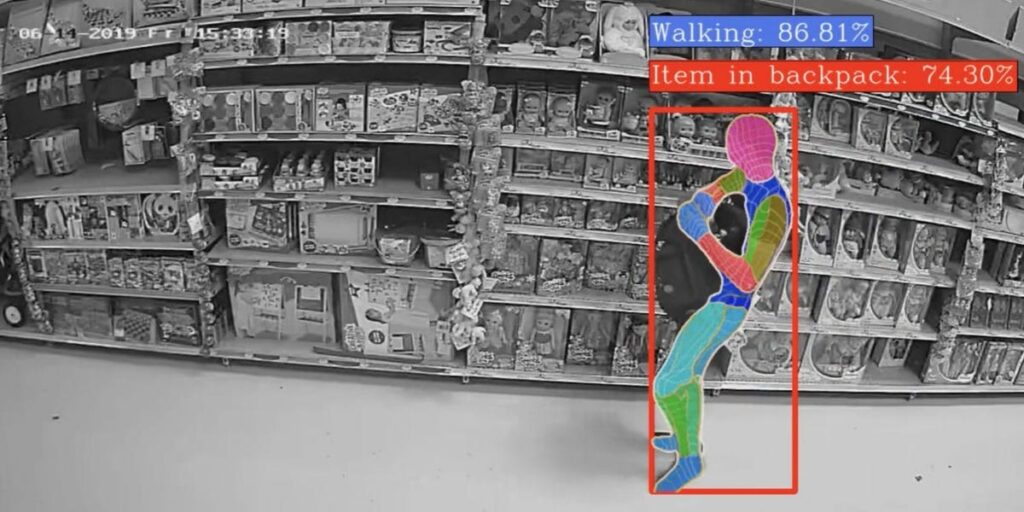One of the best ways to deal with shoplifting is to prevent it from happening in the first place.
That’s the goal of Paris-based AI startup Veesion, which has developed an algorithm that can recognize gestures to predict potential retail theft incidents.
“I happen to have an uncle in Paris that runs and operates three supermarkets, so I exactly know what shoplifting represents for retailers,” cofounder Benoît Koenig told Business Insider.
Veesion said its tech is deployed in 5,000 stores across Europe, Canada, and the US. The startup recently raised a $43 million Series B funding round to further its expansion into the US.
The alarm over shoplifting has subsided somewhat over the past year as retailers and law enforcement have gotten a better grip on the problem. Earnings call mentions of the term “shrink,” the industry term for missing inventory, have come down significantly among the major retailers Business Insider tracks, according to data from AlphaSense, an AI research platform.
But even though shoplifting is making fewer headlines (especially compared to retail’s splashy new AI capabilities), Koenig said the problem remains a compelling one to tackle with machine learning.
“It’s not glamorous, but the ROI is quite direct,” he said. “You’re going to arrest shoplifters, recover inventory, and save money.”
One key difference between Veesion’s tech and some other visual security approaches is that it says it doesn’t rely on individual tracking or physical characteristics that could raise concerns about bias or personal privacy.
“The algorithm doesn’t care about what people look like. It just cares about how your body parts move over time,” Koenig said.
The system analyzes footage from the existing security camera network to detect humans in the picture, identify their movements, and recognize various objects, such as merchandise, carts, baskets, or bags.
If a movement is deemed suspicious, a video clip is flagged and sent to store security personnel, who can then investigate or intervene. Security teams can update the app with additional details about whether the alert was necessary, whether a theft was stopped, or how much a stolen item was worth.
Koenig said more than 85% of alerts are marked as relevant for the store operators using the Veesion system. He said one US client was able to cut their losses from the health and beauty section in half in the first three months of implementation.
Many US retailers have responded to the shoplifting problem by locking up items or limiting the ways people can shop, but that approach increasingly appears to be backfiring in the form of declining sales and worsening customer experiences.
“Retailers have implemented a number of security measures — many to the detriment of the shopping experience — to protect merchandise from theft and to keep their employees and customers safe,” the National Retail Federation said in a December report on retail crime.
By layering onto a store’s existing security camera infrastructure and alerting staff to specific risky behavior, Veesion says its tech can help create a more pleasant shopping trip.
Koenig said the tech can also help reduce employee theft, which industry groups estimate costs retailers as much as shoplifting does.
“It has an internal deterrent effect,” Koenig said. “They know there is an AI in the cameras, so they’re going to be careful with what they do.”
There are further retail use-cases that Veesion is exploring too, including improper scans at self-checkout to slip-and-fall detection.
For now, Koenig said the tech is not just effective at detecting and disrupting would-be shoplifters — it also deters them from coming back. “This is much more than just recovering a few bucks,” he said.
Read the full article here


